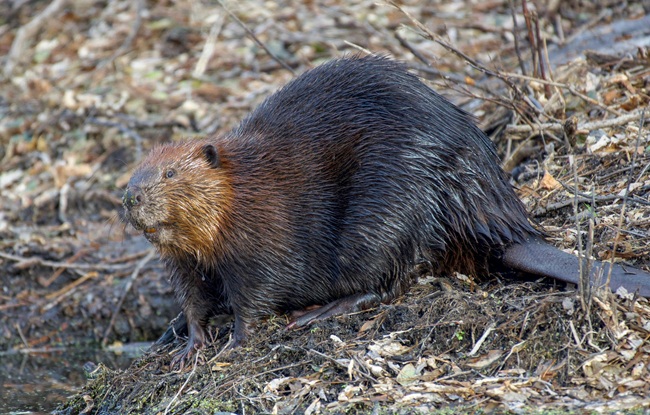
The North American beaver, Castor canadensis, is a species of rodent that has played an important role in the history of America, particularly in the fur trade.
Beavers were once widespread throughout North America but were nearly driven to extinction due to over-trapping for their valuable fur in the 19th century. They were prized for their dense, waterproof fur, which was used to make hats, coats, and other clothing items.
The fur trade was a major driver of European exploration and colonization of North America. The first European traders to establish relations with Native American tribes were often seeking beaver pelts. The French became heavily involved in the fur trade and established several trading posts and settlements throughout Canada and the Great Lakes region. The beaver became an important symbol of North America and was even featured on the official seal of the Hudson’s Bay Company, one of the largest fur trading companies in North America.
Today, beavers have made a comeback and are once again widespread throughout much of North America. They are an important part of many ecosystems, as their dam-building activities create wetland habitats that provide important benefits such as water storage, erosion control, and improved water quality.
North American beavers (Castor canadensis) can grow to be quite large, with adult males typically larger than females. Here are some measurements for adult beavers:
Body length: Adult beavers can measure up to 3.3 to 4.5 feet in length, from the nose to the base of the tail.
Tail length: Beavers have long, flat tails that are used for swimming and balance. An adult beaver’s tail can be up to 14 to 18 inches long.
Weight: Adult beavers can weigh anywhere from 35 to 66 pounds, with males typically weighing more than females.
Teeth: Beavers have large, powerful front teeth that are used for cutting through wood and bark. Adult beavers’ teeth can grow up to 1-inch centimeters) long.
If you encounter a beaver in the wild, it’s important to remember that they are wild animals and should be treated with caution and respect. Beavers are generally not aggressive towards humans, but they can become defensive if they feel threatened. If you encounter a beaver, keep a safe distance, and avoid getting too close.
Beavers are territorial animals that defend their dams and lodges. If you see a beaver dam or lodge, avoid disturbing it or altering the water flow, as this can disrupt the beaver’s habitat and cause them stress. If you want to observe a beaver, try to do so quietly and without disturbing them. Beavers have poor eyesight but a keen sense of hearing, so avoid making loud noises or sudden movements that could startle them.
And remember to avoid feeding them. Feeding wildlife is never a good idea, as it can habituate animals to humans and create safety risks for both humans and wildlife. Do not feed beavers or any other wild animals.
10 Fun Facts About Beaver
Beavers are the second-largest rodents in the world, after the capybara.
Beavers have transparent eyelids that allow them to see underwater.
Beavers’ teeth never stop growing, so they need to constantly gnaw on things to keep them from getting too long.
Beavers can hold their breath for up to 15 minutes underwater.
Beavers are expert builders and can construct dams and lodges with complex underwater entrances and exits.
Beavers are social animals that live in family groups known as colonies.
Beavers are herbivores and primarily eat bark, leaves, and aquatic plants.
Beavers’ tails are used for balance, communication, and as a warning signal when they slap the water.
Beavers are known for their waterproof fur, which is made up of two types of hair: a dense undercoat and longer, coarser guard hairs.
Beavers are considered a keystone species because their dam-building activities can create wetland habitats that support a wide range of plant and animal species.
Related Articles & Free Email Newsletter Sign Up
North American Otters are Among the Most Playful Animals in the World
Porcupines Are One of the Largest Rodents in the World




Comment here